Finasteride 1mg: The Ultimate Guide to This Powerful Hair Loss Solution

Hair loss is a concern that affects millions of people worldwide, often leading to a loss of confidence and self-esteem. One of the most effective treatments for male pattern baldness is Finasteride 1mg. This FDA-approved medication has shown remarkable results in preventing hair loss and even promoting regrowth in some cases. In this comprehensive guide, we will delve into what Finasteride 1mg is, how it works, its benefits, side effects, and usage, providing you with all the information you need about this powerful hair loss solution. GLOJAS Specialist Clinic is a trusted MOH-licensed, LCP-certified centre for hair transplant Malaysia, led by NSR-registered surgeons with over 27 years of experience. We specialise in FUE hair transplant, offering safe, natural, and long-lasting results. Patients across Malaysia rely on our medical expertise and proven outcomes. Understanding Finasteride 1mg: What Is It? Finasteride 1mg is a medication primarily used to treat male pattern baldness (androgenetic alopecia) in men. It falls under a class of drugs called 5-alpha-reductase inhibitors. Originally developed for treating benign prostatic hyperplasia (BPH) in larger doses (5mg), it was later discovered that a lower dose of 1mg effectively reduces hair loss in men. The 1mg dosage is now commonly prescribed for hair loss management. How Does Finasteride 1mg Work? Hair loss in men is largely driven by the hormone dihydrotestosterone (DHT), a byproduct of testosterone. High levels of DHT shrink hair follicles, which eventually leads to thinning hair and hair loss. Finasteride 1mg works by inhibiting the 5-alpha-reductase enzyme, responsible for converting testosterone into DHT. By reducing DHT levels in the scalp, Finasteride helps prevent further hair loss and encourages regrowth in some individuals. Benefits of Finasteride 1mg for Hair Loss Many individuals turn to Finasteride 1mg for its proven benefits in managing hair loss. Here are some of its key advantages: 1. Effectiveness in Reducing Hair Loss Studies have shown that Finasteride 1mg can reduce DHT levels by up to 60%, which significantly slows down the hair loss process. Most men taking this medication notice a decrease in hair shedding within the first 3-6 months of usage. 2. Promotes Hair Regrowth Apart from halting hair loss, Finasteride 1mg has the potential to stimulate hair regrowth. Many users experience an increase in hair density and thickness, making it one of the most effective non-surgical treatments for androgenetic alopecia. 3. FDA-Approved and Clinically Proven Finasteride 1mg is FDA-approved for treating male pattern baldness. It has undergone extensive clinical trials and research, proving its efficacy and safety when used as directed. 4. Convenient Oral Medication Unlike topical treatments like minoxidil, Finasteride 1mg is taken orally in pill form, making it easy to incorporate into a daily routine. This convenience can increase adherence to the treatment plan, leading to more consistent results. How to Use Finasteride 1mg Effectively To achieve the best results from Finasteride 1mg, it’s crucial to use the medication correctly. Here’s a guide on how to use it: 1. Dosage and Administration The standard dosage for hair loss treatment is 1mg of Finasteride taken once daily, with or without food. It’s important to take the medication at the same time every day to maintain a consistent level in your bloodstream. 2. Duration of Treatment Consistency is key with Finasteride 1mg. Most users need to take it for at least 3-6 months to notice a reduction in hair loss. Continuous use is necessary to maintain the results. If you stop taking Finasteride, the DHT levels will rise again, and hair loss may resume within 6-12 months. 3. Monitoring Progress Keep track of your progress by taking regular photos of your hairline and scalp. This can help you see the subtle changes and improvements over time. Potential Side Effects of Finasteride 1mg While Finasteride 1mg is generally well-tolerated, it can cause side effects in some individuals. It’s important to be aware of these potential effects: 1. Sexual Side Effects Some men may experience sexual side effects, including decreased libido, erectile dysfunction, or difficulty achieving orgasm. These side effects are typically rare and often resolve once the medication is discontinued. 2. Hormonal Changes Finasteride can affect hormone levels, which may lead to changes such as breast tenderness or enlargement (gynecomastia) in rare cases. If you notice any unusual symptoms, consult a healthcare professional. 3. Allergic Reactions Though uncommon, some people may experience allergic reactions, such as skin rashes, itching, or swelling of the lips and face. Seek immediate medical attention if you experience any signs of an allergic reaction. Precautions and Considerations Before Using Finasteride 1mg Before starting Finasteride 1mg, consider the following precautions: 1. Not Suitable for Women and Children Finasteride 1mg is not approved for use in women or children. Pregnant women, in particular, should avoid handling crushed or broken tablets, as Finasteride can cause abnormalities in a male fetus. 2. Discuss with Your Doctor Always consult a healthcare professional before starting Finasteride 1mg, especially if you have a history of liver disease, prostate issues, or other medical conditions. Your doctor can provide guidance on whether this medication is suitable for you and discuss potential interactions with other medications you may be taking. 3. Regular Check-ups While taking Finasteride 1mg, regular check-ups with your doctor are recommended to monitor your progress and address any concerns related to side effects or effectiveness. Frequently Asked Questions (FAQs) Q1: How long does it take for Finasteride 1mg to show results? Most users start noticing a reduction in hair loss within 3-6 months of consistent use. Significant hair regrowth, if it occurs, typically becomes visible after 6-12 months of daily intake. Q2: Can women use Finasteride 1mg for hair loss? No, Finasteride 1mg is not recommended for women, particularly those who are or may become pregnant, as it can cause birth defects in male fetuses. Q3: Is Finasteride 1mg a lifelong treatment? Yes, to maintain the benefits and prevent further hair loss, Finasteride 1mg needs to be taken continuously. Discontinuing the medication can lead to a return of hair loss within 6-12 months. Q4: Are
Kos Menanam Rambut: Panduan Lengkap untuk Pemulihan Rambut
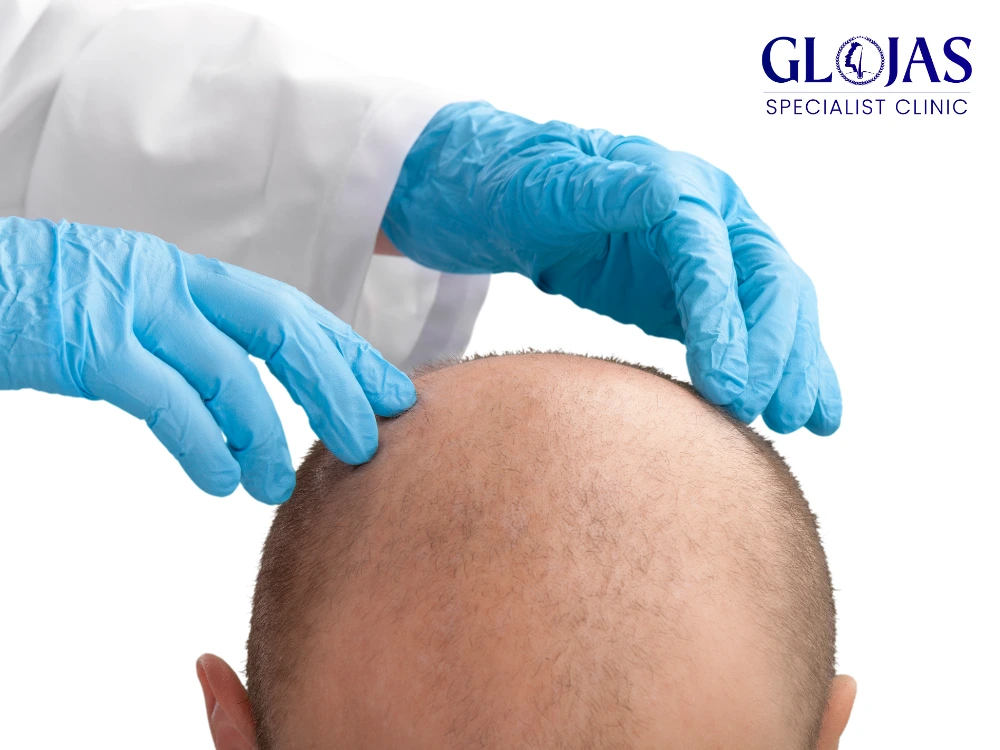
Kehilangan rambut adalah masalah yang dialami oleh ramai orang, dan ia boleh memberi impak besar terhadap keyakinan diri serta penampilan. Untuk mengatasi masalah ini, penanaman rambut menjadi pilihan yang semakin popular. Namun, salah satu aspek penting yang perlu dipertimbangkan sebelum menjalani (hair transplant) prosedur ini adalah kos menanam rambut. Dalam artikel ini, kita akan membincangkan secara terperinci mengenai kos menanam rambut, faktor-faktor yang mempengaruhi kos, dan langkah-langkah yang perlu diambil sebelum dan selepas prosedur. Apa Itu Penanaman Rambut? Penanaman rambut adalah prosedur pembedahan yang melibatkan pemindahan folikel rambut dari kawasan yang mempunyai banyak rambut (kawasan penderma) ke kawasan yang mengalami kebotakan atau kehilangan rambut. Tujuannya adalah untuk memberikan hasil yang kekal dan secara estetik meningkatkan penampilan rambut. Prosedur ini semakin mendapat perhatian kerana ia dianggap sebagai solusi jangka panjang untuk masalah kebotakan. Teknik Penanaman Rambut Terdapat dua teknik utama dalam penanaman rambut: Teknik Follicular Unit Transplantation (FUT): Dalam teknik ini, sehelai kulit yang mengandungi folikel rambut diambil dari kawasan penderma dan dibahagikan kepada unit folikel yang lebih kecil sebelum ditanam ke kawasan yang terjejas. Kaedah ini biasanya menghasilkan jumlah folikel yang lebih banyak dalam satu sesi. Teknik Follicular Unit Extraction (FUE): Teknik ini melibatkan pengambilan folikel rambut secara individu menggunakan alat khas. Kelebihan FUE adalah ia meninggalkan parut yang lebih kecil berbanding dengan FUT. Namun, prosesnya lebih memakan masa dan biasanya lebih mahal. Mengapa Kos Menanam Rambut Penting? Sebelum memutuskan untuk menjalani prosedur penanaman rambut, adalah penting untuk mempertimbangkan kos menanam rambut kerana ia memainkan peranan utama dalam perancangan kewangan anda. Mengetahui anggaran kos dapat membantu anda membuat keputusan yang lebih baik dan merancang untuk perbelanjaan yang diperlukan. Berikut adalah beberapa sebab mengapa kos ini penting: Perancangan Kewangan: Mengetahui kos membantu anda merancang dan menguruskan kewangan dengan lebih baik. Ini termasuk pengeluaran untuk prosedur itu sendiri dan sebarang kos tambahan yang mungkin timbul selepas itu. Pilih Klinik yang Sesuai: Dengan memahami kos, anda dapat membandingkan harga antara klinik dan memilih yang menawarkan nilai terbaik untuk perkhidmatan yang diberikan. Namun, jangan hanya memilih berdasarkan harga; kualiti dan reputasi klinik juga penting. Kepuasan Pelanggan: Mengetahui kos dan proses yang terlibat dapat memberikan ketenangan fikiran. Ini membolehkan anda memiliki harapan yang realistik tentang hasil yang akan dicapai. Faktor yang Mempengaruhi Kos Menanam Rambut Beberapa faktor yang mempengaruhi kos menanam rambut termasuk: 1. Lokasi Klinik Kos penanaman rambut berbeza mengikut lokasi klinik. Klinik yang terletak di bandar besar seperti Kuala Lumpur biasanya mengenakan harga yang lebih tinggi berbanding dengan klinik di kawasan luar bandar. Ini disebabkan oleh kos sewa dan operasi yang lebih tinggi di kawasan bandar. 2. Reputasi Klinik Reputasi klinik juga memainkan peranan penting dalam menentukan kos menanam rambut. Klinik yang mempunyai pakar yang berpengalaman dan telah terbukti memberikan hasil yang baik mungkin mengenakan bayaran yang lebih tinggi. Pelanggan biasanya lebih bersedia untuk membayar lebih bagi mendapatkan rawatan yang berkualiti dan selamat. 3. Pengalaman dan Kemahiran Doktor Kemahiran dan pengalaman doktor yang menjalankan prosedur juga akan mempengaruhi kos. Doktor tanam rambut yang mempunyai kepakaran dalam bidang penanaman rambut biasanya mengenakan bayaran lebih tinggi berbanding mereka yang baru memulakan karier dalam bidang ini. Pastikan untuk memilih doktor yang berkelayakan dan mempunyai rekod prestasi yang baik. 4. Bilangan Folikel yang Ditanam Kos menanam rambut juga bergantung kepada jumlah folikel rambut yang perlu ditanam. Lebih banyak folikel yang diperlukan, lebih tinggi kos yang akan dikenakan. Ini bermakna jika anda memerlukan penanaman yang lebih besar untuk menampung kawasan kebotakan yang lebih luas, kos keseluruhan akan meningkat. 5. Teknik yang Digunakan Seperti yang dinyatakan sebelumnya, terdapat dua teknik utama dalam penanaman rambut: FUT dan FUE. Teknik FUE biasanya lebih mahal kerana ia lebih memakan masa dan memerlukan alat yang lebih canggih. Oleh itu, pilihan teknik yang anda pilih akan mempengaruhi kos menanam rambut. 6. Kos Rawatan Susulan Setelah prosedur penanaman rambut, anda mungkin memerlukan rawatan susulan untuk memastikan hasil yang terbaik. Ini termasuk penggunaan ubat untuk merangsang pertumbuhan rambut dan mencegah keguguran rambut lanjut. Kos rawatan susulan ini juga perlu dipertimbangkan dalam anggaran keseluruhan kos menanam rambut. Anggaran Kos Menanam Rambut Setelah memahami faktor-faktor yang mempengaruhi kos menanam rambut, mari kita lihat anggaran kos untuk prosedur ini. Di Malaysia, kos menanam rambut boleh berbeza-beza bergantung kepada klinik dan lokasi. Secara amnya, berikut adalah anggaran kos: Kos untuk Teknik FUT: Antara RM3,000 hingga RM10,000, bergantung kepada jumlah folikel yang ditanam dan reputasi klinik. Kos untuk Teknik FUE: Antara RM5,000 hingga RM15,000, dengan harga yang lebih tinggi jika bilangan folikel yang ditanam adalah besar. Perlu diingat bahawa ini adalah anggaran kasar, dan harga sebenar mungkin berbeza bergantung kepada keadaan tertentu. Oleh itu, adalah bijak untuk mendapatkan beberapa sebut harga daripada klinik yang berbeza sebelum membuat keputusan. Kelebihan dan Kekurangan Menanam Rambut Sebelum memutuskan untuk menjalani prosedur penanaman rambut, adalah penting untuk memahami kelebihan dan kekurangan yang terlibat. Kelebihan Hasil yang Kekal: Salah satu kelebihan utama penanaman rambut adalah hasilnya yang kekal. Sekali folikel rambut ditanam, ia akan tumbuh semula seperti rambut biasa. Ini menjadikannya pilihan yang baik bagi mereka yang ingin mengatasi masalah kebotakan secara kekal. Peningkatan Keyakinan Diri: Kehilangan rambut boleh memberi kesan psikologi yang besar. Penanaman rambut dapat meningkatkan keyakinan diri individu dengan memberikan penampilan yang lebih muda dan menarik. Ramai yang melaporkan peningkatan dalam kebahagiaan dan keyakinan selepas menjalani prosedur ini. Prosedur yang Selamat: Jika dilakukan oleh pakar yang berpengalaman, penanaman rambut adalah prosedur yang selamat dengan risiko komplikasi yang rendah. Klinik yang baik biasanya akan memastikan semua langkah keselamatan diambil untuk melindungi pesakit. Kekurangan Kos yang Tinggi: Seperti yang telah dibincangkan, kos menanam rambut boleh menjadi sangat tinggi, dan tidak semua orang mampu untuk melabur dalam prosedur ini. Ini mungkin menjadi halangan bagi sesetengah individu yang ingin mendapatkan semula rambut mereka. Masa Pemulihan: Selepas prosedur, mungkin terdapat masa pemulihan yang diperlukan sebelum hasil akhir dapat dilihat. Ini termasuk kemerahan dan pembengkakan yang mungkin berlaku. Selain itu, rambut yang ditanam biasanya akan mengalami fasa “syok” di mana ia akan gugur sebelum mula tumbuh semula. Risiko Komplikasi: Walaupun jarang, terdapat risiko komplikasi seperti jangkitan, parut, atau kegagalan pertumbuhan rambut selepas penanaman. Ini adalah risiko yang perlu
Kos Tanam Jambang: Panduan Lengkap untuk Lelaki
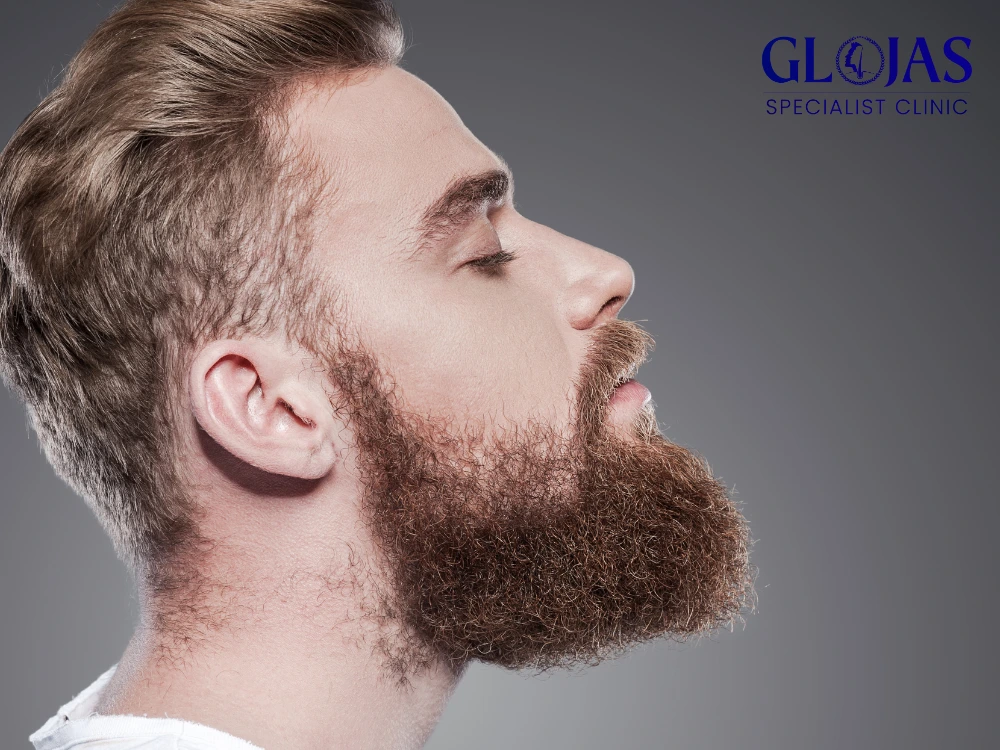
Tanam jambang adalah prosedur kosmetik yang semakin mendapat perhatian di kalangan lelaki di seluruh dunia. Bagi mereka yang ingin memiliki jambang yang lebat dan teratur, tanam jambang menjadi pilihan yang menarik. Walau bagaimanapun, sebelum memutuskan untuk menjalani prosedur ini, penting untuk memahami kos tanam jambang dan faktor-faktor lain yang terlibat. Dalam artikel ini, kita akan membincangkan secara mendalam mengenai kos tanam jambang, manfaat, prosedur, serta perkara yang perlu dipertimbangkan sebelum melakukannya. Apa Itu Tanam Jambang? Tanam jambang adalah prosedur pemindahan folikel rambut dari kawasan donor ke kawasan wajah di mana jambang ingin ditanam. Proses ini bertujuan untuk menghasilkan jambang yang lebih lebat dan tampak semula jadi. Biasanya, folikel rambut diambil dari bahagian belakang kepala, di mana rambut lebih lebat dan sihat. Setelah itu, folikel tersebut akan ditanam ke dalam kulit wajah menggunakan teknik yang tepat. Kenapa Lelaki Memilih Tanam Jambang? Terdapat beberapa alasan mengapa lelaki memilih untuk menjalani tanam jambang. Antara sebab-sebab utama adalah: Penampilan Menarik: Jambang yang lebat dan terurus memberikan penampilan yang lebih maskulin dan menarik. Ia dapat meningkatkan daya tarikan dan keyakinan diri lelaki. Mengatasi Masalah Jambang Jarang: Bagi mereka yang mempunyai jambang yang jarang tumbuh atau tidak seragam, tanam jambang boleh membantu mencapai penampilan yang lebih baik dan lebih seimbang. Hasil yang Kekal: Berbeza dengan produk kosmetik lain yang memerlukan penggunaan berterusan, hasil tanam jambang dapat bertahan lama jika dijaga dengan baik. Prosedur yang Selamat: Dengan kemajuan dalam teknologi perubatan, tanam jambang kini dilakukan dengan cara yang lebih selamat dan berkesan. Banyak pesakit melaporkan hasil yang memuaskan selepas menjalani prosedur ini. Kos Tanam Jambang Salah satu pertimbangan utama bagi sesiapa yang bercadang untuk melakukan tanam jambang adalah kos tanam jambang. Kos ini boleh berbeza-beza bergantung kepada beberapa faktor yang akan dibincangkan di bawah. 1. Lokasi Klinik Kos tanam jambang dapat berbeza mengikut lokasi klinik. Klinik yang terletak di bandar besar, seperti Kuala Lumpur atau Johor Bahru, biasanya mengenakan kos yang lebih tinggi berbanding dengan klinik di kawasan luar bandar. Oleh itu, adalah penting untuk menyelidik dan membandingkan harga di pelbagai lokasi sebelum membuat keputusan. 2. Kelayakan dan Pengalaman Doktor Kelayakan dan pengalaman doktor yang menjalankan prosedur juga mempengaruhi kos tanam jambang. Doktor yang berpengalaman dan mempunyai rekod kejayaan yang baik biasanya mengenakan bayaran yang lebih tinggi. Walau bagaimanapun, memilih doktor yang berkualiti adalah penting untuk memastikan hasil yang memuaskan dan mengurangkan risiko komplikasi. 3. Kaedah Prosedur Terdapat beberapa kaedah yang digunakan dalam tanam jambang, termasuk Follicular Unit Extraction (FUE) dan Follicular Unit Transplantation (FUT). Kaedah FUE biasanya lebih mahal kerana ia melibatkan proses pengambilan folikel rambut yang lebih teliti dan tidak memerlukan sayatan besar. Oleh itu, pilihan kaedah akan mempengaruhi kos tanam jambang. 4. Jumlah Folikel Rambut yang Ditanam Kos tanam jambang juga dipengaruhi oleh jumlah folikel rambut yang ingin ditanam. Semakin banyak folikel yang diperlukan, semakin tinggi kos yang terlibat. Sebagai contoh, prosedur yang melibatkan 1,000 folikel mungkin berbeza kosnya berbanding dengan prosedur yang melibatkan 3,000 folikel. Oleh itu, adalah penting untuk berbincang dengan doktor mengenai keperluan dan anggaran sebelum prosedur. 5. Perkhidmatan Tambahan Beberapa klinik menawarkan perkhidmatan tambahan seperti rawatan selepas pembedahan, ubat penahan sakit, dan penjagaan pasca-prosedur. Kos untuk perkhidmatan tambahan ini perlu diambil kira dalam anggaran keseluruhan kos tanam jambang. Anggaran Kos Tanam Jambang Secara umum, kos tanam jambang di Malaysia boleh berbeza-beza antara RM3,000 hingga RM10,000 atau lebih, bergantung kepada faktor-faktor yang telah dibincangkan. Berikut adalah anggaran kasar berdasarkan kaedah dan lokasi: FUE: RM5,000 hingga RM15,000 FUT: RM4,000 hingga RM10,000 Klinik di bandar besar: RM7,000 hingga RM15,000 Klinik di kawasan luar bandar: RM3,000 hingga RM8,000 Kos ini adalah anggaran dan boleh berbeza mengikut klinik dan keperluan individu. Oleh itu, adalah penting untuk mendapatkan sebut harga yang tepat daripada klinik sebelum membuat keputusan. Prosedur Tanam Jambang Proses tanam jambang biasanya melibatkan beberapa langkah utama: 1. Konsultasi Awal Sebelum menjalani prosedur, pesakit perlu menjalani sesi konsultasi dengan doktor. Dalam sesi ini, doktor akan menilai keadaan wajah pesakit dan membincangkan keperluan serta harapan pesakit. Ini adalah masa yang baik untuk bertanya tentang prosedur, risiko, dan kos yang terlibat. 2. Persediaan untuk Pembedahan Sebelum prosedur, doktor akan memberikan arahan mengenai apa yang perlu dilakukan. Ini termasuk mengelakkan ubat tertentu yang boleh meningkatkan risiko pendarahan dan memastikan pesakit berada dalam keadaan kesihatan yang baik. Pesakit mungkin juga dinasihatkan untuk tidak merokok atau mengelakkan alkohol beberapa hari sebelum prosedur. 3. Pelaksanaan Prosedur Prosedur tanam jambang biasanya dilakukan di bawah anestesia tempatan. Doktor akan memulakan dengan mengambil folikel rambut dari kawasan donor. Dalam kaedah FUE, folikel diambil satu persatu menggunakan alat khas, manakala dalam kaedah FUT, jalur kulit diambil dari bahagian belakang kepala dan folikel akan dipisahkan kemudian. Setelah folikel diambil, doktor akan menyiapkan kawasan wajah yang akan ditanam. Ini melibatkan membuat sayatan kecil di kawasan tersebut dan menanam folikel rambut dengan teliti. Prosedur ini boleh mengambil masa antara 4 hingga 8 jam bergantung kepada jumlah folikel yang ditanam. 4. Pemulihan Setelah prosedur selesai, pesakit akan diberi arahan penjagaan pasca-pembedahan. Ini termasuk cara menjaga kawasan yang ditanam, ubat-ubatan yang perlu diambil, dan aktiviti yang perlu dielakkan dalam tempoh pemulihan. Pemulihan penuh biasanya mengambil masa antara beberapa minggu hingga beberapa bulan, dan pesakit disarankan untuk menghadiri sesi pemeriksaan susulan dengan doktor. Penjagaan Selepas Tanam Jambang Setelah menjalani tanam jambang, penjagaan yang betul adalah penting untuk memastikan pertumbuhan rambut yang sihat dan memuaskan. Berikut adalah beberapa langkah penjagaan yang perlu diambil: Elakkan Menggaru atau Menyentuh Kawasan Ditanam: Selepas prosedur, elakkan daripada menggaru atau menyentuh kawasan yang ditanam untuk mengelakkan jangkitan dan merosakkan folikel rambut. Menggunakan Produk yang Disyorkan: Ikuti arahan doktor mengenai penggunaan produk penjagaan selepas pembedahan. Ini termasuk syampu dan losyen yang mungkin diperlukan untuk membantu proses penyembuhan. Pemakanan yang Seimbang: Makanan yang kaya dengan vitamin dan mineral penting dapat membantu mempercepatkan pemulihan. Pastikan anda makan makanan yang seimbang dan mencukupi. Elakkan Aktiviti Berat: Dalam beberapa minggu pertama selepas pembedahan, elakkan daripada melakukan aktiviti berat yang boleh menyebabkan tekanan pada kawasan yang ditanam. Pemeriksaan Susulan: Hadiri semua sesi pemeriksaan susulan yang dijadualkan dengan doktor. Ini penting untuk memastikan bahawa pemulihan berjalan dengan baik dan tiada masalah yang timbul.
Doktor Tanam Rambut: Pakar dalam Memulihkan Keyakinan dan Penampilan Anda
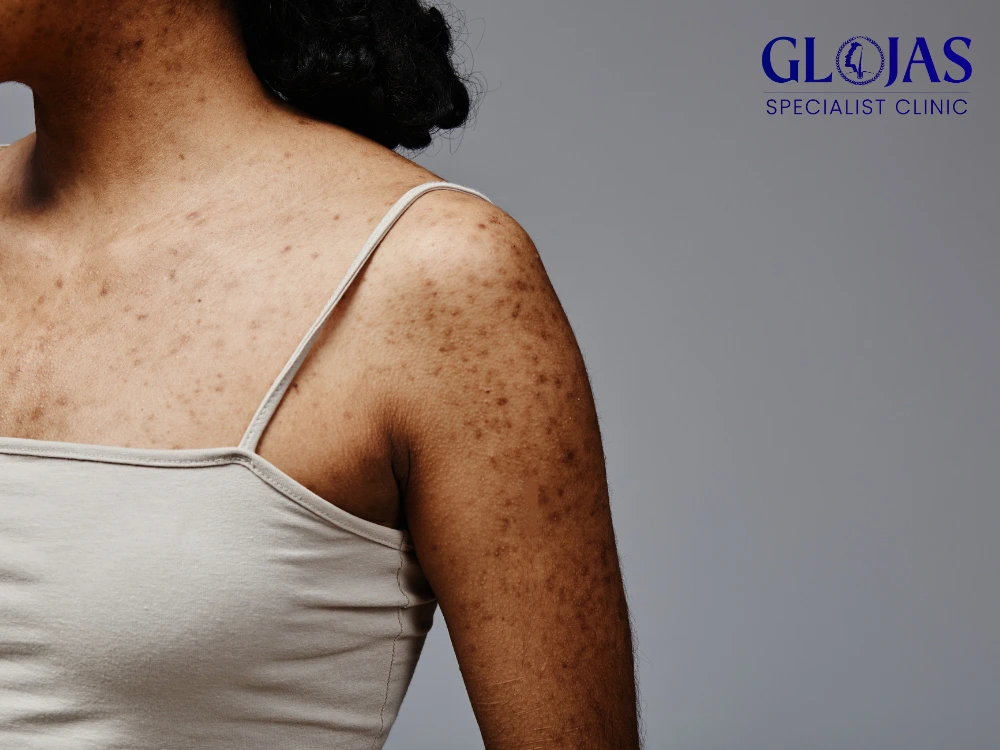
Kehilangan rambut adalah masalah biasa yang dihadapi oleh ramai orang, tidak kira usia atau jantina. Dalam keadaan di mana rambut yang hilang menjejaskan penampilan dan keyakinan diri, rawatan tanam rambut (atau transplantasi rambut) muncul sebagai penyelesaian yang berkesan. Di Malaysia, terdapat ramai doktor yang pakar dalam prosedur tanam rambut, menggunakan teknik moden untuk memberikan hasil yang semulajadi dan tahan lama. Artikel ini akan membincangkan bagaimana doktor tanam rambut bekerja, teknik yang digunakan, perkara yang perlu dipertimbangkan sebelum memilih doktor, serta tips penjagaan selepas menjalani prosedur. Apa Itu Prosedur Tanam Rambut? Tanam rambut ialah prosedur perubatan yang dilakukan untuk mengembalikan rambut ke kawasan yang mengalami kebotakan atau penipisan. Prosedur ini melibatkan pemindahan folikel rambut dari kawasan penderma (biasanya di bahagian belakang atau sisi kepala) ke kawasan yang mengalami keguguran. Teknik ini dijalankan oleh doktor tanam rambut yang terlatih dalam transplantasi rambut, memastikan setiap langkah diambil untuk menghasilkan hasil yang semulajadi. Terdapat pelbagai teknik tanam rambut yang ditawarkan, termasuk Follicular Unit Extraction (FUE) dan Follicular Unit Transplantation (FUT). Teknik-teknik ini memastikan rambut yang dipindahkan tumbuh seperti rambut semula jadi, memberikan pesakit penampilan yang lebih penuh dan memuaskan. Kenapa Pilih Doktor Tanam Rambut? Doktor tanam rambut adalah pakar yang terlatih dalam bidang transplantasi rambut, memahami bukan sahaja teknik pemindahan tetapi juga anatomi dan fisiologi kulit kepala. Seorang doktor tanam rambut yang berpengalaman akan dapat menilai jenis keguguran rambut yang dialami dan mencadangkan kaedah yang terbaik untuk memberikan hasil yang semulajadi. Berikut adalah beberapa sebab kenapa pemilihan doktor tanam rambut yang berkelayakan adalah penting: Kepakaran dan PengalamanDoktor tanam rambut yang berpengalaman akan dapat mengenal pasti punca keguguran rambut dan memberikan penyelesaian yang sesuai. Kepakaran ini juga penting untuk mengelakkan sebarang komplikasi semasa prosedur dan memastikan pemulihan yang cepat dan selamat. Penggunaan Teknik TerkiniDoktor yang pakar dalam tanam rambut biasanya mengamalkan teknik yang lebih terkini dan canggih, seperti FUE, yang kurang menyakitkan dan tidak meninggalkan parut ketara. Teknologi terbaru juga membantu dalam memastikan hasil yang lebih baik, di mana rambut kelihatan tumbuh secara semulajadi. Hasil yang SemulajadiSeorang doktor tanam rambut yang berpengalaman akan memastikan rambut yang ditanam mengikut corak pertumbuhan semulajadi pesakit. Ini adalah penting untuk menghasilkan penampilan yang lebih kemas dan memastikan perbezaan antara rambut asli dan rambut tanam tidak kelihatan. Nasihat Penjagaan Selepas ProsedurPenjagaan selepas tanam rambut sangat penting untuk keberhasilan jangka panjang. Doktor tanam rambut yang berkualiti akan memberikan nasihat dan panduan tentang penjagaan selepas prosedur untuk memastikan folikel rambut baru dapat tumbuh dengan sihat. Teknik Tanam Rambut yang Digunakan oleh Doktor Tanam Rambut Follicular Unit Extraction (FUE) FUE adalah teknik popular dalam tanam rambut di mana folikel rambut diambil satu persatu dari kawasan penderma menggunakan alat khusus. Teknik ini tidak meninggalkan parut yang ketara dan waktu pemulihan biasanya lebih singkat. FUE adalah pilihan yang popular kerana memberikan hasil yang kelihatan lebih semulajadi dan kurang invasif. Follicular Unit Transplantation (FUT) Dalam teknik FUT, jalur kulit kepala diambil dari kawasan penderma dan kemudian dipotong menjadi unit kecil sebelum dipindahkan ke kawasan yang mengalami keguguran rambut. Walaupun teknik ini meninggalkan parut kecil, ia lebih sesuai bagi mereka yang memerlukan jumlah folikel rambut yang banyak. Tanam Rambut Berasaskan LaserSesetengah doktor tanam rambut menggunakan teknologi laser untuk prosedur ini. Teknologi laser boleh membantu mempercepatkan pemindahan folikel rambut dan memperbaiki kecekapan prosedur. Laser juga membantu dalam mengurangkan ketidakselesaan dan meminimalkan masa pemulihan. Pemindahan Platelet-Rich Plasma (PRP)Selain daripada teknik tanam rambut konvensional, beberapa doktor juga menawarkan pemindahan PRP untuk meningkatkan pertumbuhan rambut. PRP adalah rawatan menggunakan darah pesakit sendiri untuk menggalakkan pertumbuhan folikel rambut. Doktor akan menyuntik PRP ke kawasan yang ditanam untuk menggalakkan penyembuhan dan pertumbuhan yang lebih cepat. Perkara yang Perlu Dipertimbangkan Sebelum Memilih Doktor Tanam Rambut Reputasi dan Pengalaman DoktorSebelum menjalani prosedur, pastikan doktor yang anda pilih mempunyai pengalaman yang mencukupi dalam tanam rambut. Lihat ulasan dan testimoni daripada pesakit-pesakit sebelumnya. Ini dapat memberikan gambaran mengenai reputasi doktor dan hasil yang diberikan. Klinik dan Kemudahan yang DisediakanPastikan klinik yang dipilih bersih, selesa, dan dilengkapi dengan peralatan yang sesuai untuk prosedur tanam rambut. Klinik yang berkualiti akan memastikan persekitaran yang selamat dan selesa untuk pesakit. Teknik yang DitawarkanTidak semua doktor tanam rambut menggunakan teknik yang sama, dan teknik yang sesuai bergantung kepada keadaan keguguran rambut yang dialami. Pastikan doktor menerangkan pilihan teknik yang sesuai untuk anda dan menjelaskan pro dan kontra setiap teknik. Kos RawatanKos rawatan tanam rambut boleh berbeza-beza mengikut klinik, teknik yang digunakan, dan jumlah folikel yang diperlukan. Pastikan anda membandingkan kos dan memastikan harga yang dibayar berbaloi dengan perkhidmatan dan hasil yang ditawarkan oleh doktor tanam rambut. Prosedur Tanam Rambut: Langkah demi Langkah Prosedur tanam rambut biasanya melibatkan beberapa langkah penting yang dilakukan dengan teliti oleh doktor tanam rambut untuk memastikan hasil yang terbaik. Berikut adalah gambaran umum prosedur ini: Konsultasi AwalSebelum prosedur, pesakit akan menjalani sesi konsultasi bersama doktor tanam rambut untuk membincangkan keperluan, keinginan, dan jangkaan hasil. Doktor akan menilai kawasan penderma dan penerima serta memilih teknik yang paling sesuai. Persediaan untuk ProsedurPada hari prosedur, kawasan penderma akan dicukur dan dibius untuk memastikan keselesaan pesakit. Doktor akan membuat tanda pada kawasan yang akan dipindahkan untuk memudahkan proses tanam rambut. Pengambilan Folikel RambutFolikel rambut akan diambil satu persatu (jika menggunakan teknik FUE) atau melalui jalur kulit (jika menggunakan teknik FUT). Pengambilan ini dilakukan dengan berhati-hati untuk memastikan rambut penderma tetap sihat. Pemindahan Folikel ke Kawasan BotakFolikel yang telah diambil akan dipindahkan ke kawasan yang botak atau menipis mengikut corak pertumbuhan rambut semulajadi. Doktor tanam rambut akan menggunakan alat khusus untuk memastikan kedalaman dan sudut yang sesuai bagi menghasilkan hasil yang kelihatan semulajadi. PemulihanSelepas prosedur, pesakit akan diberikan panduan penjagaan. Penjagaan ini termasuk cara mencuci rambut, aktiviti yang perlu dielakkan, serta penggunaan produk penjagaan yang disyorkan oleh doktor tanam rambut. Penjagaan Selepas Prosedur Tanam Rambut Penjagaan yang baik selepas prosedur adalah penting untuk memastikan hasil yang memuaskan. Berikut adalah beberapa tips penjagaan selepas tanam rambut: Mengelakkan Sentuhan KasarElakkan menyentuh kawasan yang baru ditanam untuk beberapa hari bagi mengelakkan folikel rambut daripada rosak atau tercabut. Gunakan Produk Penjagaan yang DisyorkanDoktor tanam rambut biasanya akan menyarankan syampu dan produk penjagaan rambut yang sesuai. Produk
10 Hair Tonic Berkesan Untuk Rambut Lebat Dengan Cepat (2025)
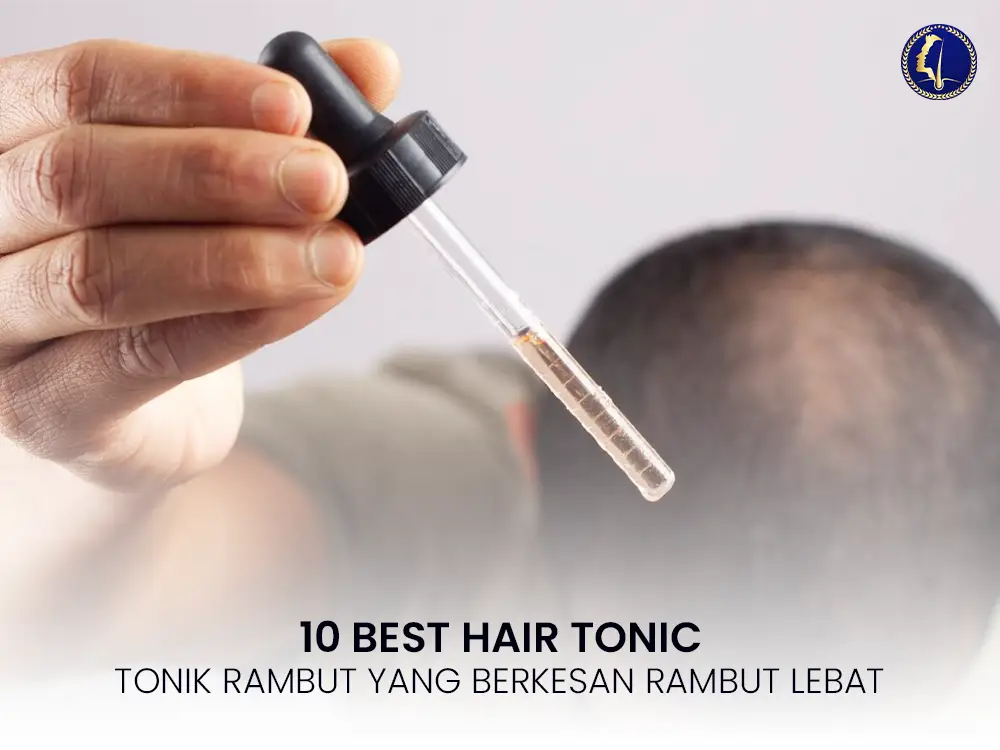
Memiliki rambut lebat dan sihat adalah impian ramai orang, namun faktor persekitaran, pemakanan yang tidak sihat, tekanan, dan genetik kadang-kadang menjadi halangan utama. Walaupun begitu, penggunaan produk penjagaan rambut yang tepat dapat membantu menyelesaikan masalah ini. Salah satu produk yang semakin popular untuk menebalkan rambut adalah penyembur tonik rambut (hair tonic spray). 1. GLOJAS M5 Spray (Exclusively at GLOJAS Specialist Clinic) GLOJAS M5 Spray adalah salah satu tonik rambut paling terkenal di Malaysia yang hanya boleh didapati di GLOJAS Specialist Clinic. Diformulasikan sendiri oleh Prof. Dr. JasG. Seorang “Hair Transplant Specialist” di Malaysia. Beliau adalah “ABHRS & FISHRS Certified Member”. Anda boleh dapatkan konsultasi percuma di GLOJAS Clinic. 2. The Body Shop Ginger Scalp Care Hair Tonic The Body Shop Ginger Scalp Care Hair Tonic mengandungi ekstrak halia yang terkenal dengan sifatnya yang membantu merangsang akar rambut dan meningkatkan kesihatan kulit kepala. Ia sesuai untuk mereka yang mengalami kulit kepala kering dan rambut menipis. Produk ini boleh digunakan setiap hari selepas mencuci rambut. 3. Kérastase Densifique Bain Densité Hair Spray Kérastase Densifique adalah salah satu produk premium yang dirumus khas untuk menebalkan rambut. Diformulasikan dengan teknologi Stemoxydine, tonik ini bertindak merangsang pertumbuhan folikel rambut yang sihat dan memberikan volume pada rambut. 4. L’Oréal Paris Elvive Full Resist Anti-Hair Fall Toner L’Oréal Paris Elvive Full Resist adalah penyembur tonik yang diformulasikan untuk mengurangkan rambut gugur dan memberikan ketebalan pada rambut. Tonik ini mengandungi vitamin B5 dan arginine yang membantu menguatkan rambut dari akar hingga hujung. 5. Shiseido Adenovital Scalp Essence Shiseido Adenovital Scalp Essence mengandungi adenosine, yang membantu merangsang pertumbuhan rambut baru. Ia memberi kesegaran pada kulit kepala dan menambah ketebalan rambut dengan penggunaan berterusan. 6. Mise en Scène Perfect Repair Hair Serum Spray Mise en Scène adalah tonik rambut yang mampu memberikan kelembapan kepada rambut kering dan menipis. Dengan penggunaan yang konsisten, produk ini mampu meningkatkan ketebalan rambut dan menjadikannya lebih kuat dan sihat. 7. Vitabrid C12 Hair Tonic Vitabrid C12 Hair Tonic menggunakan vitamin C stabil untuk membantu menyuburkan kulit kepala dan meningkatkan pertumbuhan rambut. Tonik ini terkenal dengan keupayaannya untuk merangsang pertumbuhan rambut, serta memberikan tekstur yang lebih tebal pada rambut. 8. Pura D’or Hair Thinning Therapy Energizing Scalp Serum Pura D’or adalah tonik rambut yang diformulasikan dengan bahan-bahan organik seperti minyak argan dan ekstrak aloe vera. Ia bertindak untuk mengurangkan keguguran rambut, menguatkan rambut, dan memberi kesan volum pada rambut yang menipis. 9. OGX Thick & Full Biotin & Collagen Spray OGX terkenal dengan produk penjagaan rambut berkualiti tinggi. Tonik ini mengandungi biotin dan kolagen yang membantu menebalkan rambut, memberikan volume yang lebih banyak, serta meningkatkan ketahanan rambut terhadap kerosakan. 10. Luxe Organix Hair Grow Serum Luxe Organix adalah pilihan tonik rambut yang sesuai bagi mereka yang mencari produk dengan bahan semulajadi. Mengandungi biotin, ekstrak ginseng, dan minyak argan, produk ini membantu merangsang pertumbuhan rambut dan memberikan ketebalan pada rambut yang menipis. Cara Merawat Rambut dengan Betul: Dos dan Jangan Untuk mencapai hasil yang terbaik dalam merawat rambut, ada beberapa perkara yang perlu diambil perhatian. Berikut adalah beberapa dos dan jangan yang perlu anda ingat: Dos: Jaga kebersihan kulit kepala: Pastikan kulit kepala sentiasa bersih dan bebas daripada minyak berlebihan. Cuci rambut sekurang-kurangnya 2-3 kali seminggu. Gunakan produk yang sesuai: Pilih tonik atau syampu yang sesuai dengan jenis rambut dan masalah rambut yang anda hadapi. Pakai pelindung rambut: Apabila menggunakan alat pengering atau pelurus rambut, pastikan anda menggunakan pelindung haba untuk mengurangkan kerosakan pada rambut. Urut kulit kepala: Mengurut kulit kepala setiap hari dapat meningkatkan peredaran darah, yang menyokong pertumbuhan rambut yang lebih sihat. Konsisten dengan penggunaan tonik: Gunakan tonik rambut setiap hari secara konsisten untuk melihat hasil yang optimum. Jangan: Jangan terlalu kerap mencuci rambut: Mencuci rambut terlalu kerap boleh menghilangkan minyak semulajadi rambut dan menyebabkan kulit kepala kering. Jangan menggunakan alat pengering panas secara berlebihan: Penggunaan alat panas yang berlebihan boleh menyebabkan rambut kering dan rapuh. Jangan sikat rambut basah: Sikat rambut hanya apabila ia kering atau setengah kering kerana rambut basah lebih mudah putus. Jangan tarik rambut: Elakkan menarik rambut ketika menyikat atau mencucinya untuk mengelakkan rambut dari mudah gugur. Jangan gunakan produk yang mengandungi bahan kimia keras: Elakkan produk penjagaan rambut yang mengandungi sulfat, paraben, atau alkohol kerana bahan ini boleh merosakkan rambut dalam jangka panjang. 5 Soalan Lazim Tentang Tonik Rambut 1. Apakah tonik rambut dan bagaimana ia membantu menebalkan rambut?Tonik rambut adalah produk yang dirumus untuk merawat kulit kepala dan folikel rambut. Ia membantu meningkatkan peredaran darah ke kulit kepala, menguatkan akar rambut, dan merangsang pertumbuhan rambut baru yang lebih sihat. 2. Berapa lama masa yang diambil untuk melihat hasil selepas menggunakan tonik rambut?Hasil mungkin berbeza mengikut individu, tetapi biasanya ia mengambil masa 3 hingga 6 minggu penggunaan secara konsisten untuk melihat peningkatan pada ketebalan dan pertumbuhan rambut. 3. Bolehkah tonik rambut digunakan untuk rambut yang rosak akibat pengeringan atau pelurusan?Ya, tonik rambut boleh membantu menguatkan rambut yang rosak dan mencegah kerosakan lebih lanjut dengan memperbaiki kesihatan kulit kepala dan folikel rambut. 4. Adakah tonik rambut selamat digunakan setiap hari?Sebagian besar tonik rambut selamat digunakan setiap hari, tetapi pastikan anda mengikuti arahan penggunaan yang disyorkan oleh pengeluar untuk mendapatkan hasil terbaik. 5. Adakah tonik rambut berkesan untuk semua jenis rambut?Tonik rambut umumnya berkesan untuk semua jenis rambut, tetapi bagi mereka yang mempunyai masalah kulit kepala tertentu (seperti kelemumur atau kulit kepala sensitif), pastikan memilih produk yang sesuai dengan masalah kulit kepala tersebut. Dengan memilih tonik rambut yang tepat dan mengikuti langkah penjagaan yang betul, anda boleh mencapai rambut yang lebih lebat, sihat, dan kuat. GLOJAS Specialist Clinic offers expert hair loss treatment through personalized, evidence-based plans developed by board-certified specialists. Using FDA- and CE-approved technologies like PRP therapy and precision hair restoration, we ensure safe, effective results. Comprehensive aftercare and follow-up support reinforce patient trust, making GLOJAS a reliable authority in hair restoration solutions. Read More : Hair Transplant Malaysia
Minoxidil vs. Finasteride: Which One Is the Best for Hair Growth?
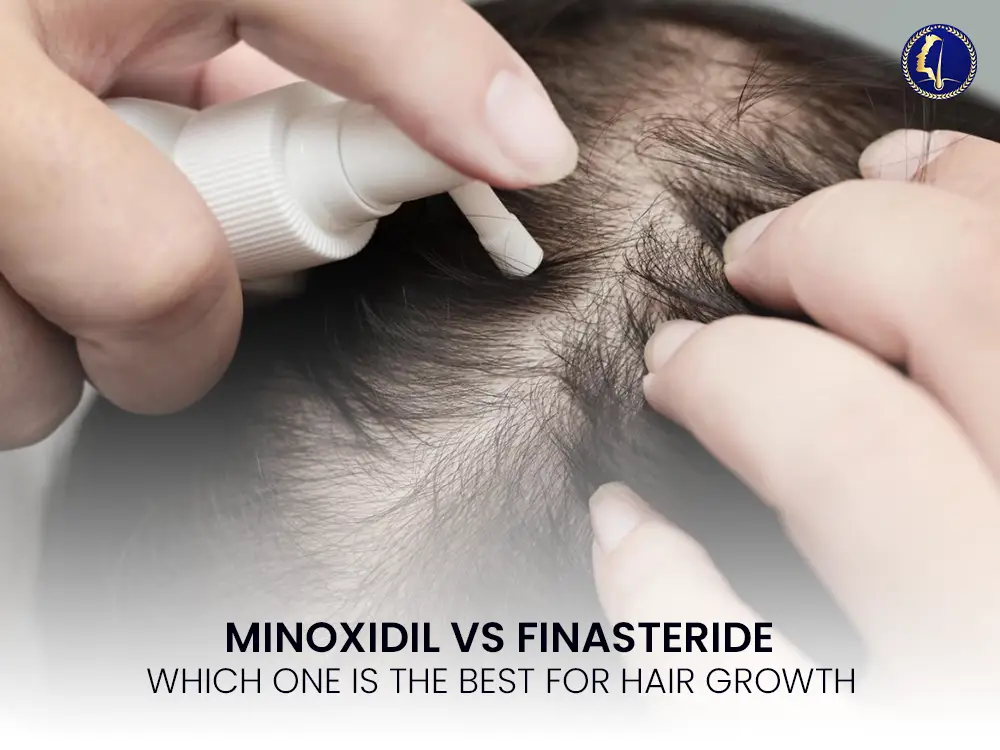
Minoxidil vs. Finasteride Minoxidil Vs Finasteride – Hair loss is a common concern for both men and women, and two of the most popular treatments are Minoxidil and Finasteride. But which one is more effective? In this detailed comparison, we will explore their mechanisms, effectiveness, side effects, and costs to determine the best option for hair growth. What is Minoxidil? Minoxidil is a topical treatment designed to stimulate hair growth. It is available in 2% and 5% concentrations, either in liquid or foam forms. Minoxidil was originally developed as a medication for high blood pressure, but researchers discovered its ability to promote hair regrowth. How Does Minoxidil Work? Increases blood circulation to the hair follicles Prolongs the anagen (growth) phase of the hair cycle Revitalizes weakened hair follicles to produce thicker hair Minoxidil is approved for both men and women and is commonly used to treat male and female pattern baldness. What is Finasteride? Finasteride is an oral medication that works by blocking Dihydrotestosterone (DHT), the hormone responsible for hair loss in men. It is usually available in 1mg and 5mg tablets, with the lower dose prescribed for hair loss treatment. How Does Finasteride Work? Inhibits the 5-alpha reductase enzyme, reducing DHT levels Slows down hair follicle shrinkage Promotes hair regrowth by preventing further miniaturization Unlike Minoxidil, Finasteride is only approved for men and is not recommended for women due to potential hormonal effects. Minoxidil vs. Finasteride: Key Differences Feature Minoxidil Finasteride Form Topical solution/foam Oral tablet Mechanism Stimulates hair follicles Blocks DHT to prevent hair loss Who Can Use It? Men & Women Men only Effectiveness Works best on crown/thinning areas Prevents hair loss & regrows hair Side Effects Scalp irritation, shedding Decreased libido, erectile dysfunction Duration to See Results 3-6 months 4-6 months Continuous Use? Yes, stopping may cause hair loss Yes, stopping may cause hair loss Effectiveness: Which One Works Better? Minoxidil Effectiveness Minoxidil is particularly effective for early-stage hair thinning. Studies have shown that about 40-50% of users experience visible hair regrowth within 3 to 6 months. However, results may vary based on the severity of hair loss and consistency of use. Finasteride Effectiveness Finasteride is more effective in preventing hair loss, particularly in the crown and mid-scalp region. Research indicates that around 80-90% of men experience a reduction in hair loss with continued use over 6-12 months. Verdict: If your goal is to prevent further hair loss, Finasteride is more effective. If you are looking to stimulate new hair growth, Minoxidil is the better option. Side Effects of Minoxidil vs. Finasteride Minoxidil Side Effects Scalp irritation, redness, or dryness Temporary shedding phase during the first few weeks Unwanted hair growth on the face or body (if applied incorrectly) Finasteride Side Effects Decreased libido and erectile dysfunction in about 1-2% of users Mood changes, depression, or anxiety (rare cases) Potential risk to pregnant women (women should avoid handling crushed tablets) Verdict: Minoxidil has milder side effects but requires consistent application. Finasteride is more convenient (once-a-day pill) but carries hormonal side effects. Cost Comparison: Minoxidil vs. Finasteride in Malaysia Treatment Price (MYR) per month Minoxidil 5% RM 70 – RM 180 Finasteride 1mg RM 90 – RM 250 Verdict: Minoxidil is slightly more affordable, but long-term costs depend on individual needs and clinic consultations. Can You Use Minoxidil and Finasteride Together? Yes! Combining Minoxidil and Finasteride can provide optimal results, as they work through different mechanisms: Minoxidil stimulates hair growth Finasteride prevents further hair loss Many dermatologists recommend using both treatments together for maximum effectiveness. Frequently Asked Questions (FAQs) 1. Can women use Finasteride? No, Finasteride is not approved for women due to its hormonal effects, especially during pregnancy. 2. How long should I use Minoxidil or Finasteride? Both treatments require long-term use. Stopping them may result in hair loss resuming. 3. Can I buy Minoxidil or Finasteride without a prescription? Minoxidil is available over-the-counter. Finasteride requires a doctor’s prescription in most countries, including Malaysia. 4. Is Finasteride safe for long-term use? Yes, studies suggest that long-term use is safe, but some users may experience persistent side effects. 5. Does Minoxidil work on a receding hairline? Minoxidil is less effective on a receding hairline but works better on the crown and mid-scalp. 6. Can you use minoxidil after done hair transplant surgery? Yes! most hair transplant clinic use minoxidil and finasteride to maintain the hair growth! Final Verdict: Which One Should You Choose? Goal Best Option Preventing Hair Loss Finasteride Regrowing Hair Minoxidil Fast Results Finasteride Fewer Side Effects Minoxidil Combining for Best Results Minoxidil + Finasteride For those suffering from mild hair thinning, Minoxidil alone may be sufficient. However, for those experiencing significant hair loss, a combination of Minoxidil and Finasteride is the most effective approach. #HairLoss #Minoxidil #Finasteride #HairRegrowth #AlopeciaTreatment
Minoxidil Malaysia: Best Topical Solution Hair Regrowth Treatment For Men

What Is Minoxidil? Minoxidil is an FDA-approved topical treatment for hair loss. It improves blood flow in the scalp and helps wake up weak or inactive hair follicles. This encourages new hair growth. Minoxidil is used by both men and women and comes in 2% or 5% liquid or foam formulas. Minoxidil was first created to treat high blood pressure, but doctors later discovered it could also boost hair growth. In Malaysia, it is sold under brands like Rogaine, Kirkland, and many trusted pharmacy generics. How Does Minoxidil Work for Hair Loss? Minoxidil widens the blood vessels in the scalp. This increases oxygen and nutrients delivered to hair follicles. As a result, the hair’s growth (anagen) phase becomes longer. It also helps reactivate dormant follicles and supports new hair production in thinning areas. Minoxidil cannot cure the root cause of hair loss, but regular use can slow shedding and help improve density over time. Many users notice thicker, healthier-looking hair with consistent daily application. Who Should Use Minoxidil? Minoxidil is recommended for adults with androgenetic alopecia, also known as pattern baldness. It works best when used early, especially for thinning at the crown or a receding hairline within the first few years of hair loss. Benefits of Minoxidil Clinically proven: Supported by global studies showing real hair regrowth. Easy to use: Apply directly to the scalp; no prescription needed in Malaysia. Affordable: Cheaper than hair transplant surgery. Safe for long-term use: Well-tolerated with steady results. Versatile: Suitable for men and women; can be combined with finasteride or PRP therapy. A 48-week clinical study found that men with androgenetic alopecia who used 5% topical Minoxidil had significantly better hair regrowth compared to those using 2% Minoxidil or a placebo. (PubMed) Minoxidil for Men vs. Women Men: Often use the 5% solution for better results on crown thinning, bald spots, and receding hairlines.Women: Usually start with 2% to avoid irritation, but 5% foam is also effective for diffuse thinning. Results in Malaysia Most people start seeing hair regrowth after 3–6 months of daily use. The biggest improvements usually appear between 6–12 months. Consistency is important—skipping doses or stopping treatment can slow or reverse results. Users often report new “baby hairs,” thicker strands, and better scalp coverage. Even if regrowth is mild, it can help maintain current hair density and delay further loss. How to Use Minoxidil Effectively Start with a clean, dry scalp. Apply 1 ml to the thinning area. Massage gently and do not rinse. Wash your hands after applying. Use twice a day for best results. Let it dry before styling. Tip: Do not use more than the recommended amount. Patience is key—results take time. Minoxidil Comparison 5% vs. 2% 5% Minoxidil: More effective for most men and many women. 2% Minoxidil: Better for women prone to side effects. Foam vs. Liquid: Foam dries faster and may cause less irritation, though both work well. If you have sensitive skin, speak to a doctor or pharmacist before choosing a formula. Risks and Side Effects You Should Know Some users may experience: Scalp irritation or dryness Itching or redness Unwanted facial hair if the solution drips Temporary shedding during the first few weeks Serious side effects are rare. Follow directions carefully and talk to a doctor if you notice strong reactions. Is Minoxidil Safe Long-Term? Yes. Studies show that Minoxidil is safe for long-term use when applied as directed. Continuous use is needed—if you stop, new hair will slowly fall out again. Minoxidil Price in Malaysia The cost of Minoxidil in Malaysia usually ranges from RM50 to RM300 per bottle depending on brand, formula, and concentration. Generic products are often just as effective as well-known brands. Product Price (MYR) Minoxidil 2% Solution RM50 – RM120 Minoxidil 5% Solution RM70 – RM180 Minoxidil Foam (5%) RM100 – RM250 Minoxidil with DHT Blockers RM120 – RM300 Where to Buy Genuine Minoxidil in Malaysia You can buy Minoxidil from: Registered pharmacies: Guardian, Watsons, Caring Official online stores: Shopee Mall, Lazada official shops Medical hair clinics: For added safety and advice Warning: Avoid unknown sellers, as fake Minoxidil is common online. Minoxidil vs. Finasteride Minoxidil: Topical treatment Works for both men and women Available over the counter Finasteride: Oral medication Prescription only Very effective for male pattern baldness Best Results: Many men see better hair regrowth by using both treatments together. Minox works on the scalp to stimulate hair growth, while finasteride reduces DHT, the hormone that causes baldness. Using both can help thicken hair and slow further thinning more effectively than using just one. Side Effects: Minox is generally safe and causes few side effects. Some people may experience mild irritation or dryness on their scalp. Finasteride can cause sexual side effects in some men, like reduced libido or difficulty getting or keeping an erection. Always talk to a doctor before starting either treatment. Read More : Minoxidil vs Finasteride Frequently Asked Questions (FAQs) 1. How long until I see results?Most people notice improvements within 3–6 months, but using the treatment for at least a year gives better results. 2. Can it work on a receding hairline?Yes. While it works best on the crown, some users see improvement on the hairline too. 3. What happens if I stop using it?Hair will slowly return to its previous pattern, and regrowth may be lost. 4. Is it safe for women?Yes. Many women using topical hair regrowth for diffuse thinning or hormonal hair loss as a solution. 5. Are there natural ways to support hair growth?Yes. Options like biotin, pumpkin seed oil, and rosemary extract may support hair health, though results differ from person to person. Why Choose a KKM-Accredited Hair Clinic in Malaysia? A certified hair clinic provides safe and reliable care. These clinics follow strict medical standards. This ensures you get the right diagnosis and a proper treatment plan, especially when using it with other hair restoration options. Tips : You can search minoxidil near me in Google rather than buying it on untrusted platforms.
Dry Scalp: How to Treat Scalp Dryness Overnight
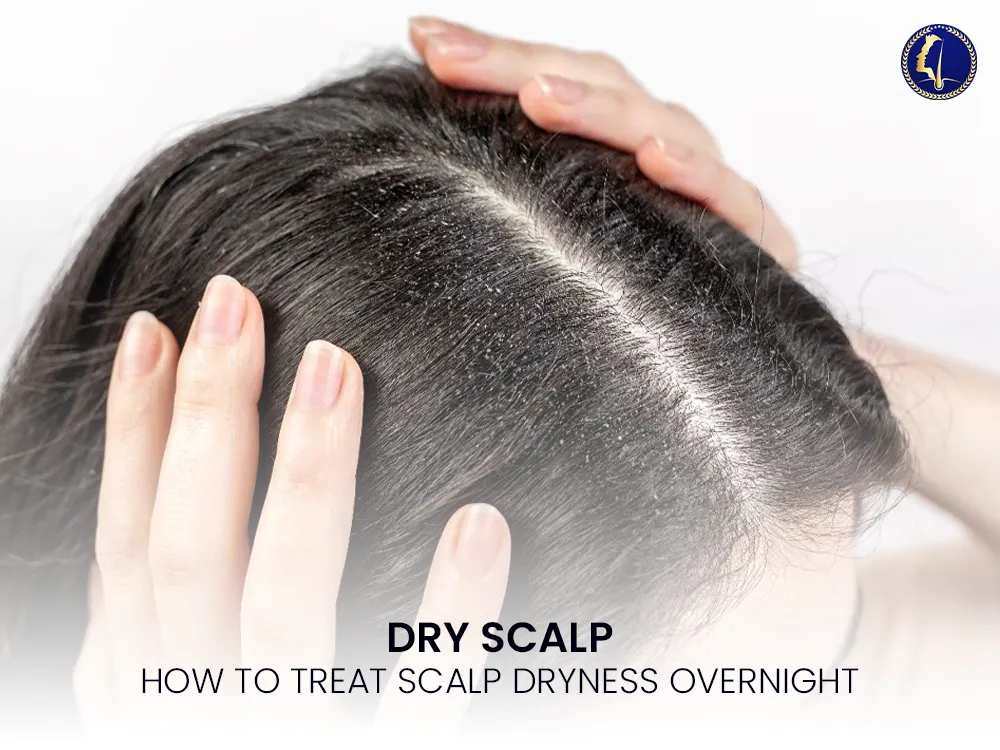
Dry Scalp Dry scalp is a common issue that many people face, leading to itching, flakiness, and discomfort. It can be caused by various factors such as weather conditions, harsh hair products, dehydration, and underlying skin conditions like eczema or psoriasis. If left untreated, a dry scalp can lead to dandruff, hair thinning, and irritation. In this guide, we will explore the causes of dry scalp, treatment options, costs in Malaysia, and answer some frequently asked questions. Causes of Dry Scalp A dry scalp occurs when the skin on your head lacks enough moisture, leading to flakiness and irritation. Some common causes include: Harsh Hair Products – Shampoos with sulfates and alcohol strip natural oils from the scalp. Cold or Dry Weather – Low humidity levels can lead to moisture loss. Overwashing Hair – Washing hair too frequently can strip away essential oils. Skin Conditions – Eczema, psoriasis, or seborrheic dermatitis can cause scalp dryness. Dehydration – Insufficient water intake can lead to dry skin, including the scalp. Poor Diet – Lack of essential fatty acids, vitamins, and hydration can contribute to dryness. How to Treat Dry Scalp There are several effective treatments for a dry scalp, ranging from natural remedies to professional treatments. 1. Home Remedies Coconut Oil – Massaging warm coconut oil into the scalp provides hydration and nourishment. Aloe Vera Gel – Soothes irritation and adds moisture to the scalp. Apple Cider Vinegar – Helps balance pH levels and remove product buildup. Tea Tree Oil – Has antimicrobial properties that help soothe itchiness and dryness. 2. Medicated Treatments Anti-Dandruff Shampoos – Shampoos containing zinc pyrithione, ketoconazole, or selenium sulfide help treat dry scalp issues. Scalp Serums & Oils – Specialized treatments with vitamin E, argan oil, and salicylic acid. Topical Steroids – For severe cases related to psoriasis or eczema. 3. Professional Scalp Treatments Scalp Hydration Therapy – Provides deep conditioning and hydration. Oxygen Scalp Therapy – Helps promote circulation and relieve dryness. PRP (Platelet-Rich Plasma) Therapy – Encourages hair transplant malaysia and scalp health by using the patient’s own plasma. Cost of Dry Scalp Treatments in Malaysia Treatment costs in Malaysia vary depending on the type of treatment and the clinic or salon providing the service. Treatment Type Estimated Cost (MYR) Anti-Dandruff Shampoos 30 – 100 Natural Oils & Serums 50 – 200 Scalp Hydration Therapy 150 – 400 Oxygen Scalp Therapy 300 – 800 PRP Therapy 1,000 – 3,000 per session Note: Prices depend on the clinic, brand, and severity of the condition. FAQs About Dry Scalp Treatment 1. How do I know if I have a dry scalp or dandruff? A dry scalp typically causes small, dry flakes with itchiness, while dandruff is associated with larger, oily flakes and redness. If unsure, consult a dermatologist. 2. Can a dry scalp lead to hair loss? Yes, prolonged scalp dryness can weaken hair follicles and contribute to hair thinning or loss. 3. How often should I wash my hair if I have a dry scalp? It is recommended to wash your hair 2-3 times per week using a mild, moisturizing shampoo to avoid stripping natural oils. 4. Are there any dietary changes that can help with dry scalp? Yes, consuming foods rich in Omega-3 fatty acids, vitamin E, and staying hydrated can help maintain scalp health. 5. When should I see a doctor for my dry scalp? If home remedies and over-the-counter treatments do not improve your condition or if you experience severe itching, redness, or hair loss, seek medical advice. Conclusion Dry scalp is a manageable condition with the right treatments and lifestyle adjustments. Whether opting for natural remedies, over-the-counter products, or professional therapies, it’s essential to choose a solution that suits your scalp type and severity. If symptoms persist, consulting a dermatologist can provide a more targeted approach to treatment. By maintaining good scalp hygiene, using the right hair products, and keeping your scalp hydrated, you can achieve a healthy and flake-free scalp. GLOJAS Specialist Clinic offers expert hair loss treatment through personalized, evidence-based plans developed by board-certified specialists. Using FDA- and CE-approved technologies like PRP therapy and precision hair restoration, we ensure safe, effective results. Comprehensive aftercare and follow-up support reinforce patient trust, making GLOJAS a reliable authority in hair restoration solutions. Read More : Hair Transplant Malaysia
Ultimate Guide to Understanding Hair Transplant Surgery Cost

Hair transplant surgery has become a popular solution for individuals dealing with hair loss, offering permanent results that restore not only hair but also confidence. However, one of the most common concerns for those considering this procedure is its cost. Understanding the factors influencing hair transplant surgery cost is crucial for making an informed decision. In this comprehensive guide, we’ll break down everything you need to know about hair transplant surgery cost. From the different pricing models to factors influencing the cost, we’ll provide insights that will help you navigate this investment in your appearance. What Is Hair Transplant Surgery? Hair transplant surgery is a medical procedure designed to move hair follicles from one part of the body (usually the back or sides of the head) to the balding or thinning areas. There are two main techniques: Follicular Unit Extraction (FUE) and Follicular Unit Transplantation (FUT). Each has its own set of pros, cons, and associated costs. Factors Affecting Hair Transplant Surgery Cost Understanding the cost breakdown of hair transplant surgery is vital because various elements influence the overall price. Let’s explore the major factors. 1. Type of Procedure (FUE vs. FUT) The type of hair transplant surgery significantly impacts the cost. FUE, which involves extracting individual follicles, tends to be more expensive due to its labor-intensive nature. On the other hand, FUT (strip harvesting) is generally less expensive but may leave a linear scar. Here’s a rough cost comparison: FUE: $4,000 to $15,000 FUT: $3,000 to $12,000 2. Number of Grafts Required The cost of hair transplant surgery is typically calculated per graft. Each graft contains 1-4 hair follicles. The more grafts you need, the higher the price will be. On average, the cost per graft ranges between $2 to $5. For a small procedure involving around 1,500 grafts, you can expect to pay between $3,000 and $7,500. A more extensive procedure, requiring 3,000 or more grafts, could cost anywhere from $6,000 to $15,000. 3. Geographical Location The cost of hair transplant surgery also varies based on your location. Major cities and regions with higher costs of living tend to have more expensive procedures. For instance, the cost in places like New York or Los Angeles can be significantly higher compared to smaller cities or international destinations like Turkey, which is famous for offering affordable hair transplants. Here’s a snapshot of average costs by region: United States: $4,000 – $15,000 United Kingdom: £3,000 – £10,000 Turkey: $1,500 – $4,000 4. Clinic Reputation and Surgeon’s Expertise Top-tier clinics and surgeons with extensive experience may charge a premium for their services. Their success rates and state-of-the-art facilities justify the higher price, but for many, this cost is well worth the added security. 5. Anesthesia and Additional Fees Don’t forget about additional costs such as anesthesia, post-operative care, and medications. While some clinics offer these as part of a package, others charge separately. Be sure to ask for a detailed breakdown of costs before proceeding. The Importance of Researching Clinic Quality When evaluating hair transplant surgery cost, it’s important to focus on more than just the price tag. Opting for a cheaper clinic with less experienced surgeons might save you money upfront, but it could result in poor outcomes that require costly corrections. Always verify the clinic’s credentials, read reviews, and if possible, schedule consultations with multiple surgeons. The expertise of the surgeon and the quality of the clinic can have a significant impact not only on the final result but also on your overall experience and satisfaction. Are Hair Transplants Covered by Insurance? In most cases, hair transplant surgery is considered a cosmetic procedure, meaning it is not covered by health insurance. However, some exceptions may exist if the surgery is deemed medically necessary (e.g., for burn victims or patients with scarring alopecia). It’s advisable to consult your insurance provider to see if your specific situation qualifies for any coverage. Comparing Domestic vs. International Hair Transplant Surgery Costs One of the emerging trends in hair transplant surgery is medical tourism, particularly to countries like Malaysia, India, and Mexico, where the cost of hair transplants is much lower. Clinics in these countries often offer comprehensive packages, including surgery, accommodation, and post-operative care, for a fraction of the price charged in Western countries. However, while the cost savings can be substantial, traveling abroad for surgery also comes with potential risks, such as language barriers and differing medical standards. It’s critical to thoroughly research international clinics to ensure they meet your expectations for safety and quality. Is the Cost of Hair Transplant Surgery Worth It? Deciding whether hair transplant surgery cost is worth it depends on a variety of personal factors. For many, the long-term benefits far outweigh the initial investment. A successful hair transplant can offer: Permanent results: Unlike other hair restoration methods, such as medication or wigs, a hair transplant is a permanent solution. Improved confidence: Many patients report significant boosts in self-esteem following the procedure. Natural-looking hairline: When performed by a skilled surgeon, a hair transplant offers natural results that seamlessly blend with your existing hair. On the other hand, it’s essential to manage expectations. The procedure can be expensive, and multiple sessions may be required for optimal results. Additionally, the recovery process can take several months, with full results sometimes not visible for up to a year. FAQs on Hair Transplant Surgery Cost 1. How much does the average hair transplant surgery cost? The average cost of hair transplant surgery ranges from $4,000 to $15,000, depending on various factors such as the number of grafts, location, and surgeon’s expertise. 2. What is the cheapest country for hair transplant surgery? Turkey is widely recognized as one of the most affordable countries for hair transplant surgery, with prices starting as low as $1,500. 3. Does health insurance cover hair transplant surgery? In most cases, hair transplant surgery is considered a cosmetic procedure and is not covered by health insurance. 4. Is FUE more expensive
Klinik Tanam Jambang: Solusi Terbaik untuk Tampil Maskulin & Menarik

Dalam dunia yang semakin mementingkan penampilan, jambang menjadi salah satu elemen penting dalam membentuk imej seseorang, terutama bagi lelaki. Jambang yang lebat dan teratur bukan sahaja memberikan penampilan yang lebih maskulin tetapi juga meningkatkan keyakinan diri. Namun, bagi sesetengah individu, mendapatkan jambang yang diidamkan boleh menjadi cabaran. Di sinilah klinik tanam jambang muncul sebagai solusi efektif untuk menangani masalah ini. Artikel ini akan meneroka secara mendalam tentang klinik tanam jambang, prosesnya, manfaatnya, dan apa yang perlu dipertimbangkan sebelum membuat keputusan. Apa Itu Klinik Tanam Jambang? Klinik tanam jambang adalah pusat perubatan yang khusus dalam prosedur pemindahan folikel rambut ke kawasan jambang untuk meningkatkan ketebalan dan kepadatan. Proses ini melibatkan pengambilan folikel rambut dari kawasan lain pada tubuh (biasanya dari belakang kepala) dan menanamnya di kawasan yang kurang rambut atau botak pada wajah. Klinik tanam jambang menggunakan teknik yang canggih dan terkini untuk memastikan hasil yang semulajadi dan memuaskan bagi pesakit. Punca Jambang Jarang dan Tidak Tumbuh Sebelum kita membincangkan lebih lanjut tentang klinik tanam jambang, penting untuk memahami punca-punca yang menyebabkan jambang jarang atau tidak tumbuh. Antara faktor yang menyumbang kepada masalah ini adalah: Genetik: Keturunan memainkan peranan besar dalam pertumbuhan jambang. Jika ahli keluarga anda mempunyai jambang yang jarang, kemungkinan besar anda juga akan mengalami masalah yang sama. Perubahan Hormon: Hormon, terutamanya testosteron, memainkan peranan penting dalam pertumbuhan rambut. Perubahan dalam tahap hormon, seperti yang berlaku semasa remaja atau disebabkan oleh perubahan kesihatan, boleh mempengaruhi pertumbuhan jambang. Kekurangan Nutrisi: Diet yang tidak seimbang yang kekurangan vitamin dan mineral penting boleh menjejaskan pertumbuhan rambut. Nutrisi seperti protein, zink, dan vitamin B kompleks adalah penting untuk pertumbuhan jambang yang sihat. Stres: Stres yang berpanjangan boleh mengganggu proses pertumbuhan rambut. Keadaan tertekan boleh mengakibatkan keguguran rambut dan pertumbuhan yang tidak teratur. Penyakit: Penyakit autoimun seperti alopecia areata boleh menyebabkan kehilangan rambut pada wajah, termasuk jambang. Dalam kes ini, sistem imun menyerang folikel rambut dan menyebabkan rambut gugur. Proses Tanam Jambang di Klinik Tanam Jambang Proses tanam jambang di klinik tanam jambang melibatkan beberapa langkah penting yang perlu diikuti untuk memastikan hasil yang memuaskan. Berikut adalah gambaran keseluruhan tentang prosedur ini: 1. Konsultasi Awal Langkah pertama adalah mendapatkan konsultasi awal di klinik tanam jambang. Dalam sesi ini, doktor atau pakar tanam jambang akan menilai keadaan jambang anda dan membincangkan pilihan yang sesuai. Ini adalah kesempatan untuk bertanya tentang prosedur, hasil yang diharapkan, serta sebarang kebimbangan yang mungkin anda miliki. Konsultasi awal ini juga memberikan peluang untuk memahami prosedur secara lebih mendalam, termasuk risiko dan manfaat yang mungkin terlibat. 2. Pemilihan Teknik Di klinik tanam jambang, terdapat dua teknik utama yang biasanya digunakan dalam proses pemindahan rambut: FUT (Follicular Unit Transplantation): Teknik ini melibatkan pemindahan sekumpulan folikel rambut dari kawasan donor (biasanya belakang kepala) dan ditanam ke kawasan jambang. Proses ini membolehkan pemindahan lebih banyak folikel dalam satu sesi, tetapi ia mungkin meninggalkan parut linear di kawasan donor. FUE (Follicular Unit Extraction): Dalam teknik ini, folikel rambut diambil satu persatu dari kawasan donor menggunakan alat khas. Teknik FUE biasanya tidak meninggalkan parut yang ketara dan membolehkan pemulihan yang lebih cepat. Ini menjadikannya pilihan yang popular di kalangan mereka yang ingin mengelakkan parut yang jelas. 3. Proses Pembedahan Setelah memilih teknik yang sesuai, prosedur pembedahan akan dilakukan di klinik tanam jambang. Sebelum prosedur dimulakan, pesakit akan diberikan anestesia tempatan untuk memastikan mereka tidak merasakan kesakitan semasa proses. Doktor akan mengambil folikel rambut dengan teliti dan menanamnya ke kawasan yang memerlukan. Proses ini biasanya mengambil masa antara 4 hingga 8 jam, bergantung kepada jumlah folikel yang akan dipindahkan. 4. Pemulihan dan Penjagaan Selepas Pembedahan Selepas prosedur, pesakit akan diberikan arahan tentang penjagaan selepas pembedahan. Ini termasuk penggunaan ubat untuk mengurangkan keradangan dan menjaga kebersihan kawasan yang ditanam. Pemulihan biasanya memerlukan beberapa minggu, dan pesakit disarankan untuk menghindari aktiviti fizikal yang berat selama tempoh ini untuk memastikan proses penyembuhan berjalan dengan lancar. Adalah normal untuk mengalami sedikit kemerahan dan bengkak di kawasan yang ditanam, tetapi ini akan pulih dalam beberapa hari. View this post on Instagram A post shared by Aesthetic Clinic Kuala Lumpur | Plastic Surgery, Hair Transplant (@glojasspecialist) Manfaat Mengunjungi Klinik Tanam Jambang Mengunjungi klinik tanam jambang menawarkan pelbagai manfaat yang tidak boleh diabaikan. Berikut adalah beberapa manfaat utama: Peningkatan Keyakinan Diri: Salah satu manfaat terbesar yang diperoleh daripada prosedur ini adalah peningkatan keyakinan diri. Jambang yang lebat dan teratur memberikan penampilan yang lebih menarik dan maskulin, yang dapat meningkatkan perasaan positif tentang diri sendiri. Hasil yang Semulajadi: Dengan teknik yang tepat, hasil tanam jambang akan kelihatan semulajadi. Rambut yang ditanam akan tumbuh dengan warna dan tekstur yang sepadan dengan rambut asli, memberikan penampilan yang harmonis. Prosedur yang Selamat: Klinik tanam jambang yang dipercayai biasanya dikendalikan oleh pakar yang berpengalaman, menjadikan prosedur ini selamat dan berisiko rendah. Pesakit dapat merasa yakin bahawa mereka berada dalam tangan yang mahir. Penyelesaian Jangka Panjang: Berbanding dengan produk atau teknik lain yang mungkin memberikan hasil sementara, tanam jambang adalah solusi jangka panjang. Setelah rambut tumbuh, ia akan kekal dan tidak memerlukan rawatan tambahan, menjadikannya pilihan yang lebih berbaloi. Meningkatkan Penampilan Keseluruhan: Jambang yang penuh dan teratur tidak hanya meningkatkan penampilan wajah tetapi juga memberikan imej yang lebih matang dan berkarisma. Ini dapat memberi kesan positif dalam kehidupan sosial dan profesional anda. Kos Tanam Jambang di Klinik Tanam Jambang Satu aspek penting yang perlu dipertimbangkan adalah kos tanam jambang. Kos prosedur ini boleh berbeza-beza bergantung kepada beberapa faktor, termasuk: Lokasi Klinik: Klinik di bandar besar mungkin mengenakan bayaran yang lebih tinggi berbanding di kawasan luar bandar. Oleh itu, adalah penting untuk melakukan penyelidikan mengenai harga di lokasi anda. Pengalaman Pakar: Pakar yang lebih berpengalaman mungkin mengenakan bayaran yang lebih tinggi. Walau bagaimanapun, memilih pakar yang berpengalaman adalah penting untuk memastikan hasil yang memuaskan dan selamat. Teknik yang Digunakan: Kos juga bergantung kepada teknik yang digunakan. Teknik FUE biasanya lebih mahal berbanding FUT kerana ia memerlukan lebih banyak masa dan tenaga. Bilangan Folikel yang Ditanam: Kos prosedur juga bergantung kepada bilangan folikel yang akan dipindahkan. Semakin banyak folikel yang ditanam, semakin tinggi kosnya. Secara purata, kos untuk tanam jambang di